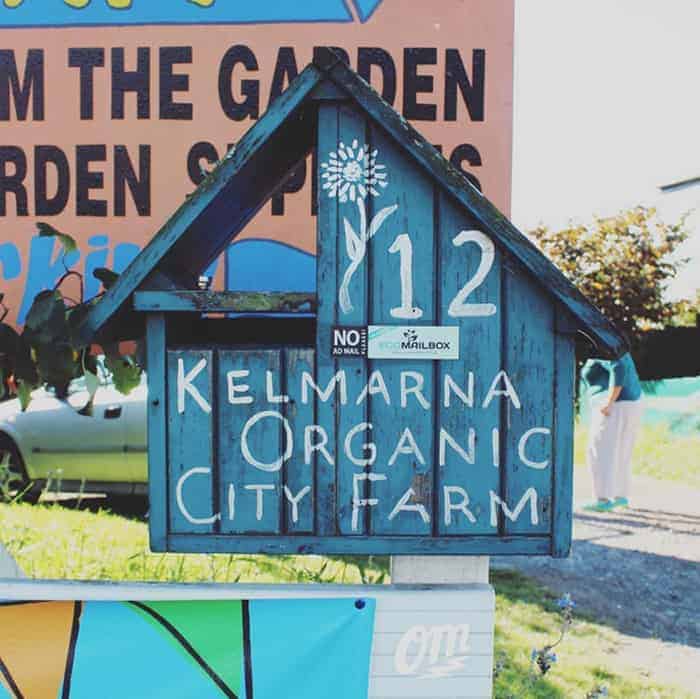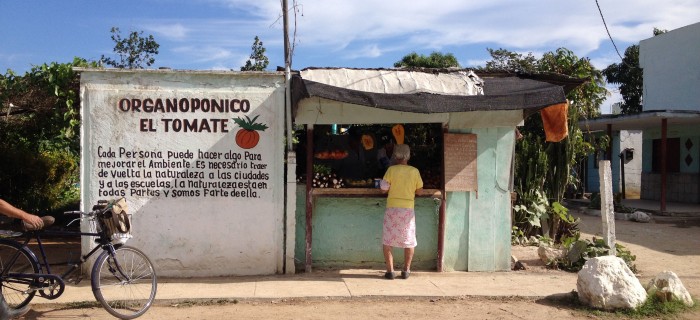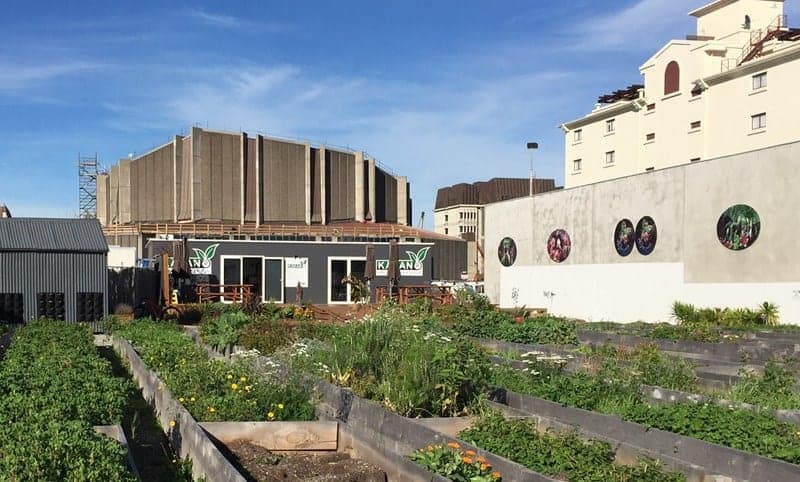
Cities are reliant on deliveries of fresh produce from rural areas, and with the pressures of climate change, population growth and energy and water supply, the cracks in our current centralised food system are beginning to show. And that means food insecurity.
The issue has undoubtedly been made worse by urban sprawl. In 2003, 49% of the world population lived in urban areas. In 2012, that’d increased to 53% and it’s been projected that 68% of people will be urban dwellers by 2050. Because of the increasing population, the cities are getting bigger and needing longer, more elaborate supply chains.
Then, with more fertile land commandeered for homes for these newly-minted city-slickers, food growers are pushed further out, and often to less-rich land. That means more food miles to get the carrots in, and maybe fewer carrots overall. So eventually, we’ll probably need to start importing.
Hawaii, a land of incredibly rich, volcanic soil, imports 90% of its food. Tellingly, the idea that the island could feed itself with organisations like Urban Farm is groundbreaking. That same reality might not be so distant for Australia & New Zealand – instead of new potatoes from Pukekohe, they’ll be from Peru.
Is it time to change how we think about food production?
Experts have suggested that food security can be significantly increased through moving towards local food production. Urban gardens aren’t a new concept in Australia & New Zealand, but they’re becoming increasingly important. Commentators say city planners and lawmakers need to take steps to make it easier, with less red tape and fewer barriers to production.
In New Zealand, keeping livestock (like chickens) is regulated. While there are often good reasons for that (Read: 4 am cock-a-doodle-doos), the legislation is outdated and really needs a good rewrite. Planning and regulating urban farming needs resources and infrastructure that some countries simply lack. Urban agriculture is even illegal in some countries and highly regulated in others. For example in Zimbabwe, police have gone as far as destroying crops.
But having urban gardens could be critically important. In third-world countries like Kenya, Uganda and Haiti, studies found that households with access to urban farms had greater food security, ate more meals, had a much healthier diet and spent less on food.
In 1989 after the collapse of the Soviet Block, Cuba lost 75% of its petrol supply, and 78% of its chemical supply. The distribution chain for food was broken. The government in Havana sprang into action. Using permaculture principles, by 2000 urban farming covered 12% of the city’s land, providing 70% of the local area’s vegetable needs. Celebratory mojitos all around.

Christchurch: an urban farming forward guard
In Christchurch, the earthquakes have created a unique opportunity (and a very tiny silver lining). In the inner city, there suddenly were vast areas of land that were empty (or, Wilson parking lots). The homes were gone, but all those back-yard fruit trees were left standing. Because the land’s impossible to do anything with, those trees have been left alone, much to the urbanites’ benefit. We’re talking apples, pears, black boy peaches, figs, walnuts, lemons and huge numbers of other produce – all free, organic, and delicious.
With locals leading the charge, community groups have planted gardens in amongst the trees, so there is always food available when needed (and, always weeding to do if you get bored).
Other areas were turned into bee food, with miles of flowering mustard plants. Some restaurants established gardens in planter boxes, feeding their customers with hyper-local vegetables. In a central-city section, Cultivate social enterprise has created an inner-city composting centre with a large vegetable garden. Businesses such as Hotel Montreal and Ballantynes started investing in rooftop beehives.
Kaiapoi, just north of Christchurch, had the same situation – lots of suddenly empty land – and has repurposed its red zone into a food forest for the community.

Hospo businesses leading the charge
Christchurch has the benefit of the Avon River and the sudden availability of land, but how can businesses in other cities add to the food supply in amongst the skyscrapers and traffic jams?
Those businesses already growing their own food were often lucky with their location – near parks or on large areas of land – but others have just looked harder for smart ways to use their space.
Cafes like Cornwall Park have started growing their greens on the property, their kitchens producing food with an emphasis on seasonal produce. Orphans Kitchen has growing plots in local Kelmarna Community Gardens and Sherwood in Queenstown employs a gardener full time to supply much of the produce to its award-winning restaurant. As Hayley Scott, Sherwood’s GM Food and Beverages says, it doesn’t mean you have to compromise on quality.
“A lot of what we use is grown on site, but you wouldn’t know. It’s not swedes, five ways – the restaurant is top 100 in the country,” she says. “The way things are going, it’s a thoughtful approach.”
The Department of Corrections may seem an unlikely addition to the list, but they have gardens on site at a number of their prisons. They also have gardens where offenders can work as a contribution to their community work hours. The produce from these gardens feeds the inmates at the prison, and is donated to local food banks.

Go window-box to table
Creating a sustainable, urban food supply for a café or restaurant does present challenges, but it’s totally doable.
Urban gardens often don’t actually need much in the way of land – green walls, rooftops, windowsills, balconies, and roadsides – with a sunny spot, a pot of soil and the will to try, you can begin to add to the food supply.
The produce probably won’t offset how much you have to weed everything, but love from your guests might – there’s lots of consumer interest and approval for businesses that create sustainable supply chains. It’s a way to carve out a niche, and get more people through the door. And more than that, it’s a way hospitality businesses could help change the world.

News you care about. Tips you can use.
Everything your business needs to grow, delivered straight to your inbox.



